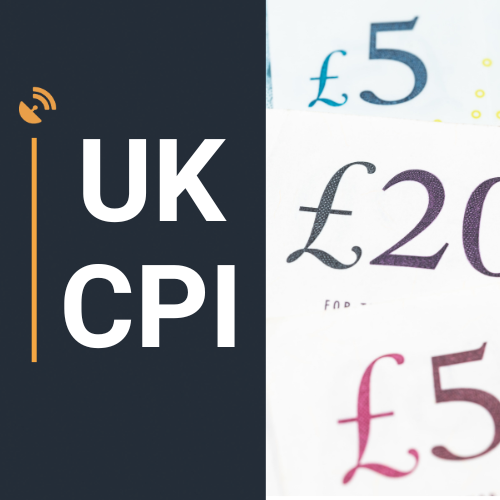Share:
The Office for National Statistics will release the critical UK CPI report on Wednesday. Headline and Core annual inflation are set to fall in October, finally below the 6.0% level. The BoE’s interest rate outlook and the Pound Sterling’s fate hinges on the UK CPI data.
The high-impact United Kingdom’s (UK) Consumer Price Index (CPI) data for October will be released by the Office for National Statistics (ONS) on Wednesday. In September, the UK CPI rose at an annual pace of 6.7% in September, at the same pace as seen in August. The data beat market expectations of a 6.5% rise. The Core CPI index (excluding volatile food and energy items) accelerated by 6.1% YoY in the reported month against an increase of 6.2% seen in August, surpassing the 6.0% forecast. Despite the persistently high inflation level, the Bank of England (BoE) held the benchmark interest rate at a 15-year high of 5.25% at its November policy meeting, leaving the door open for another interest rate hike. The BoE tweaked the language in its policy statement by saying, “the Monetary Policy Committee’s (MPC) latest projections indicate that monetary policy is likely to need to be restrictive for an extended period of time.” Last week, BoE Chief Economist Huw Pill reinforced the message that “maintaining a restrictive stance of monetary policy [is] key to meeting the inflation target.” Meanwhile, the Bank’s updated forecasts showed that the British economy would be flatlining in the coming years. The BoE forecasts also showed that inflation was expected to fall to 4.8% in October, almost two full points lower than in September. The UK central bank said that the expected decline in inflation could be due to the slowdown in the economy and the fading impact of last year’s gas price surge, implying that inflation is set to resume its downward momentum soon. Ahead of Wednesday’s inflation data, Pound Sterling traders digest the latest wage inflation data, which showed that Average Earnings excluding Bonus in the UK rose 7.7% 3M YoY in September, as against a 7.8% increase registered in August. However, the UK pay growth data is unlikely to have any significant impact on the BoE’s policy outlook. The BoE acknowledged in its November policy statement that there were “increasing uncertainties” about official data on the labor market, which has been hampered by low survey response rates. “But jobs growth was likely to have been weaker than it previously thought and the worryingly strong growth in wages was expected to cool off,” the statement said.
Meanwhile, “Bank of England tightening expectations have evaporated. World Interest Rate Probability (WIRP), a gauge by Bloomberg, now suggests 10% odds of a hike on December 14, rising modestly to top out near 20% for February 1. The first cut is largely priced in for August 1,” analysts at BBH noted.
The headline annual UK Consumer Price Index is seen rising 4.8% in October as against a 6.7% increase in September. The figure would be the lowest since October 2021, still more than twice the BoE’s 2.0% target. The Core CPI inflation is expected to drop to 5.8% YoY in October, compared to September’s 6.1% print. On a monthly basis, Britain’s CPI is seen rising by 0.1% after the 0.5% growth reported previously. The UK CPI data will be published at 07:00 GMT on Wednesday. The Pound Sterling is looking to build on its recovery above 1.2200 against the US Dollar in the lead-up to the high-impact United Kingdom’s inflation data. A hotter-than-expected headline and core inflation data could bring bets of one final BoE rate hike in December back on the table, providing extra legs to the upswing in the Pound Sterling. In this scenario, GBP/USD could head back toward the previous week’s high of 1.2429. GBP/USD is expected to challenge the 1.2100 static support should the UK CPI data disappoint the BoE hawks.
Technical outlook for the GBP/USD pair is that it needs to find acceptance above the critical 200-day Simple Moving Average (SMA) at 1.2438 on the renewed upside. The 14-day Relative Strength Index (RSI) is pointing north above the midline, justifying the extension of the upbeat momentum in the pair. A sustained break above the 200-day SMA could fuel a fresh advance toward the 100-day SMA at 1.2515. The next topside barrier is seen at the 1.2600 round figure. Conversely, strong support is seen at the 50-day SMA at 1.2255, below which the 21-day SMA at 1.2205 could test bullish commitments. Further declines could challenge the 1.2100 demand area.
The United Kingdom (UK) Consumer Price Index (CPI), released by the Office for National Statistics on a monthly basis, is a measure of consumer price inflation produced to international standards. The YoY reading compares prices in the reference month to a year earlier. Generally, a high reading is seen as bullish for the Pound Sterling (GBP), while a low reading is seen as bearish. The Bank of England is tasked with keeping inflation at around 2%, giving the monthly release its importance. An increase in inflation implies a quicker and sooner increase of interest rates or the reduction of bond-buying by the BOE. Conversely, a drop in the pace of price rises indicates looser monetary policy. FAQs about inflation are also provided.
